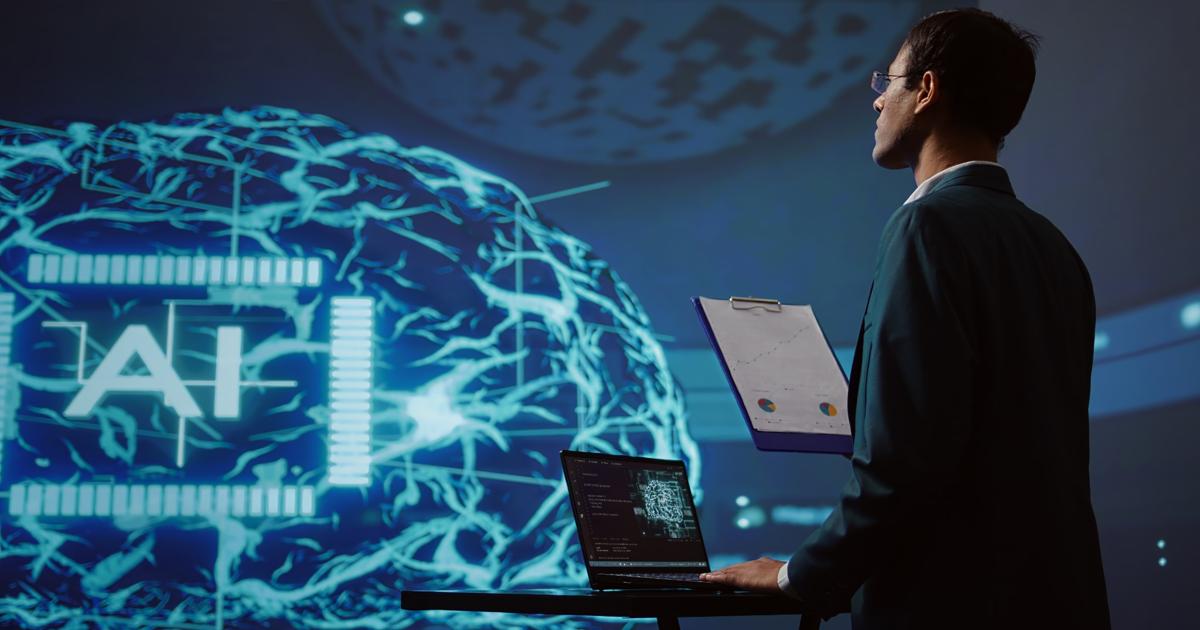Wednesday, May 3rd 2023
Can AI Measure Employees' Emotions?

AI is changing the workplace. See how it can measure emotions and how HR can leverage it to understand today’s large, diverse and dispersed workforce to improve the employee experience.
AI is Changing HR
Artificial Intelligence (AI) is changing the way we work, transforming traditional workplaces into smart, digital environments. From automating repetitive tasks to streamlining complex processes, AI is revolutionizing the way organizations operate. But the impact of AI on the workplace goes beyond increased efficiency and productivity. AI is now capable of measuring emotions and understanding employee sentiment, allowing HR departments to gain deeper insights into their workforce and improve the employee experience.
How Does AI Understand Emotions?
AI understands emotions in written text through natural language processing (NLP) techniques, which involve analyzing the words, sentence structure, and context of written language. This allows AI algorithms to detect patterns and characteristics associated with emotional expression, such as the use of positive or negative words, tone of voice, and sentiment.
AI algorithms can use machine learning techniques to train on large datasets of annotated text, allowing them to recognize and categorize emotions accurately. For example, a sentiment analysis algorithm could be trained on a dataset of employee emails and text messages, learning to classify them as positive or negative based on the language used. Similarly, it can be trained to recognize specific emotions or phrases associated with certain emotional states, such as anger, frustration or happiness.
There was a time when AI understood words but had a hard time with sentiment and emotions but recent advances make the technology an excellent tool for automating the process of understanding human emotions in our communications.
How Can HR Use Emotional Analysis?
Employee experience, employee engagement, employee morale, and employee retention are key concerns for HR departments. Creating a positive work environment that fosters employee satisfaction and productivity is critical for an organization's success. However, with the rise of remote and dispersed workforces, it has become increasingly challenging to understand and respond to the needs of employees. This is where AI-powered people analytics can make a significant difference.
People analytics is the use of data, analysis, and insights to understand and improve the employee experience. By leveraging AI-powered tools, HR departments can collect and analyze data on employee behavior, sentiment, and feedback. This allows them to identify patterns, trends, and areas of concern that impact the employee experience. By using these insights, HR departments can create targeted interventions to address specific issues and improve overall employee engagement, morale, and retention.
Examples of Emotional Analysis in HR
One of the most exciting applications of AI in people analytics is the ability to measure emotions. With advancements in natural language processing and sentiment analysis, AI can now analyze written and spoken communication to understand the emotional tone and sentiment of employees. This means that HR departments can get a real-time understanding of how employees are feeling and respond quickly to concerns or issues.
For example, instead of an HR department waiting for a quarterly or even yearly engagement survey to go out to understand what employees are feeling, they can use a tool like TruPulse to continuously understand the emotional wellbeing of employees. Using AI-powered sentiment analysis, TruPulse can quickly identify the emotional state of employees on a wide range of work related issues.
Instead of guessing about what to survey employees on or re-using the last survey, automated AI based tools like TruPulse can understand all the most common issues in the workplace and more importantly, give detailed emotional analysis to help HR teams understand the emotions behind the major issues confronting employees. HR teams no longer need to survey employees to understand the voice of the employee, they can call up automated reports in realtime whenever they want them so they can take proactive action.
In addition to measuring emotions and collecting feedback, AI-powered people analytics can also help HR departments identify and respond to diversity and inclusion issues. With dispersed workforces and remote work becoming the norm, it has become increasingly important for HR departments to understand the needs and experiences of employees from diverse backgrounds.
By leveraging AI-powered tools, HR departments can analyze data on employee behavior and sentiment to identify potential diversity and inclusion issues. This could involve analyzing communication patterns, feedback, and performance data to identify patterns of discrimination or bias. By identifying these issues early, HR can take targeted interventions to address the root causes and create a more inclusive and supportive work environment.
AI is Scaling HR
One of the challenges of measuring employee sentiment and feedback is the so-called "voice of the employee" problem. With dispersed workforces and remote work becoming the norm, it can be difficult to gather feedback from all employees and ensure that their voices are heard without devoting huge teams of people or expensive consultants to sift through and analyze data. This is where AI-powered people analytics can make a significant difference. By leveraging AI-powered tools, HR departments can collect feedback from employees continuously and in real-time, to scale beyond what they could previously accomplish. With HR teams being stretched so thin, doesn’t it make sense to scale using AI?
Recent blog posts


